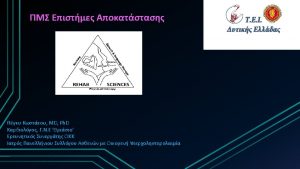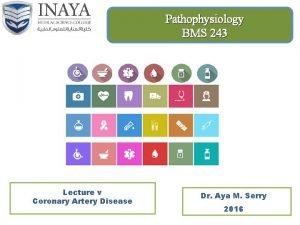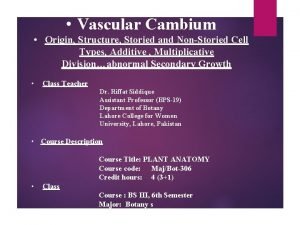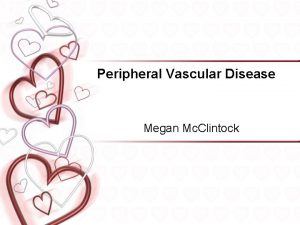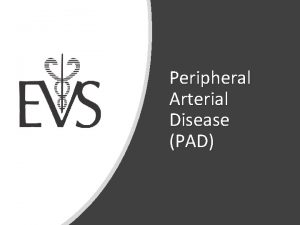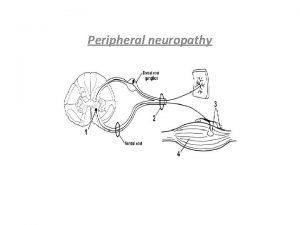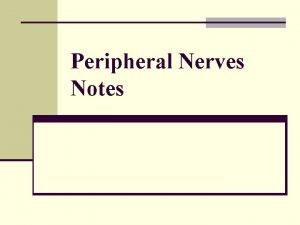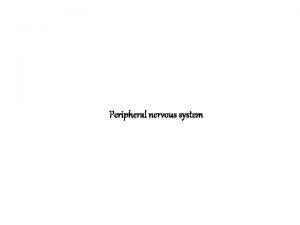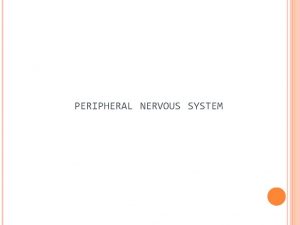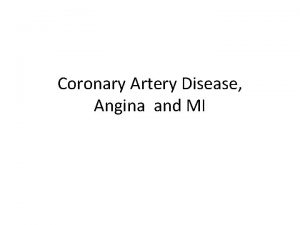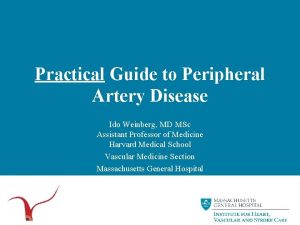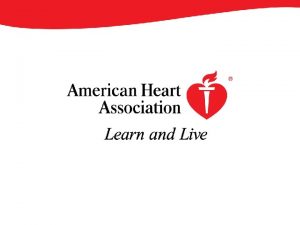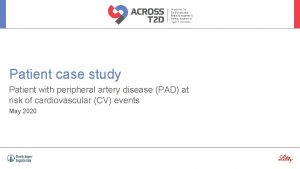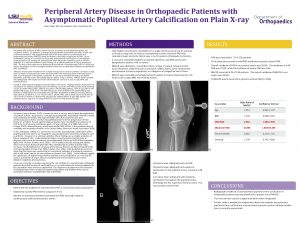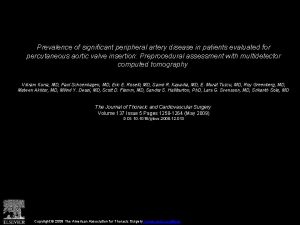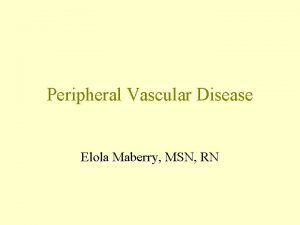Peripheral Artery Disease of the Lower Extremities Chapter















































- Slides: 47

Peripheral Artery Disease of the Lower Extremities Chapter 38 Copyright © 2014 by Mosby, an imprint of Elsevier Inc.

Description § Involves progressive narrowing and degeneration of arteries of upper and lower extremities § Atherosclerosis is the leading cause in majority of cases Copyright © 2014 by Mosby, an imprint of Elsevier Inc.

Common Sites of Atherosclerotic Lesions Copyright © 2014 by Mosby, an imprint of Elsevier Inc.

Description § Typically appears at ages in 60 s to 80 s § Largely undiagnosed § Risk factors Cigarette smoking § Hyperlipidemia § Hypertension § Diabetes mellitus § Copyright © 2014 by Mosby, an imprint of Elsevier Inc.

Description § Peripheral artery disease (PAD) may affect § § § Iliac artery Femoral artery Popliteal artery Tibial artery Peroneal artery Copyright © 2014 by Mosby, an imprint of Elsevier Inc.

Case Study Jupiterimages/Photos. com/Thinkstock § B. D. , a 62 -year-old man, complains of pain in his lower legs when walking his dog § Pain is relieved with rest § He has a history of hypertension and hyperlipidemia § He smokes one pack of cigarettes per day Copyright © 2014 by Mosby, an imprint of Elsevier Inc.

Clinical Manifestations § Classic symptom of PAD – intermittent claudication Ischemic muscle pain that is caused by a constant level of exercise § Resolves within 10 minutes or less with rest § Reproducible § Copyright © 2014 by Mosby, an imprint of Elsevier Inc.

Clinical Manifestations § Paresthesia § Numbness or tingling in the toes or feet § Produces loss of pressure and deep pain sensations § Injuries often go unnoticed by patient Copyright © 2014 by Mosby, an imprint of Elsevier Inc.

Clinical Manifestations § Thin, shiny, and taut skin § Loss of hair on the lower legs § Diminished or absent pedal, popliteal, or femoral pulses § Pallor of foot with leg elevation § Reactive hyperemia of foot with dependent position Copyright © 2014 by Mosby, an imprint of Elsevier Inc.

Clinical Manifestations § Pain at rest § Occurs in the foot or toes § Aggravated by limb elevation § Occurs from insufficient blood flow § Occurs more often at night Copyright © 2014 by Mosby, an imprint of Elsevier Inc.

Case Study Jupiterimages/Photos. com/Thinkstock § When assessing B. D. , you find that his feet are pale and cool to touch. § He has diminished pedal and posterior tibial pulses and decreased sensation. § He has a small open area on the lateral side of his left ankle. Copyright © 2014 by Mosby, an imprint of Elsevier Inc.

Complications § Atrophy of the skin and underlying muscles § Delayed healing § Wound infection § Tissue necrosis § Arterial ulcers Copyright © 2014 by Mosby, an imprint of Elsevier Inc.

Complications § Nonhealing arterial ulcers and gangrene are most serious complications § May result in amputation If adequate blood flow is not restored § If severe infection occurs § Copyright © 2014 by Mosby, an imprint of Elsevier Inc.

Diagnostic Studies § Doppler ultrasound § Segmental blood pressure § Ankle-brachial index (ABI) § Done using a hand-held Doppler § Angiography and magnetic resonance angiography § Duplex imaging § Bidirectional, color Doppler Copyright © 2014 by Mosby, an imprint of Elsevier Inc.

Case Study § An angiography reveals nearly Jupiterimages/Photos. com/Thinkstock completely obstructed vessels in B. D. ’s lower extremities § He is diagnosed with peripheral artery disease § What treatment plan will you anticipate? Copyright © 2014 by Mosby, an imprint of Elsevier Inc.

Collaborative Care Risk Factor Modification § Tobacco cessation § Aggressive treatment of hyperlipidemia § BP maintained <140/90 § Glycosylated hemoglobin <7. 0% for diabetics Copyright © 2014 by Mosby, an imprint of Elsevier Inc.

Collaborative Care Drug Therapy § ACE inhibitors § Ramipril (Altace) § ↓ Cardiovascular morbidity § ↓ Mortality § ↑ Peripheral blood flow § ↑ ABI § ↑ Walking distance Copyright © 2014 by Mosby, an imprint of Elsevier Inc.

Collaborative Care Drug Therapy § Antiplatelet agents § Aspirin § Clopidogrel (Plavix) Copyright © 2014 by Mosby, an imprint of Elsevier Inc.

Collaborative Care Drug Therapy § Drugs prescribed for treatment of intermittent claudication § Cilostazol (Pletal) § Inhibits platelet aggregation § ↑ vasodilation § Pentoxifylline (Trental) § ↑ Erythrocyte flexibility § ↓ Blood viscosity Copyright © 2014 by Mosby, an imprint of Elsevier Inc.

Case Study § B. D. is ordered the following Jupiterimages/Photos. com/Thinkstock drugs: Aspirin 81 mg daily § Simvastatin (Zocor) 10 mg h. s. § Ramipril (Altace) 2. 5 mg daily § Pentoxifylline (Trental) 400 mg t. i. d. § Copyright © 2014 by Mosby, an imprint of Elsevier Inc.

Collaborative Care Exercise Therapy § Exercise improves oxygen extraction in the legs and skeletal metabolism § Walking is the most effective exercise for individuals with claudication § 30 to 60 minutes daily, 3 times/week Copyright © 2014 by Mosby, an imprint of Elsevier Inc.

Collaborative Care Nutritional Therapy § BMI <25 kg/m 2 § Waist circumference <40 inches for men and <35 inches for women § Diet high in fruits, vegetables, and whole grains and low in cholesterol, saturated fat, and salt Copyright © 2014 by Mosby, an imprint of Elsevier Inc.

Collaborative Care Leg With Critical Limb Ischemia § Revascularization via bypass surgery § Protect from trauma § Decrease ischemic pain § Prevent/control infection § Improve arterial perfusion § Other strategies § Spinal cord stimulation § Angiogenesis Copyright © 2014 by Mosby, an imprint of Elsevier Inc.

Case Study § B. D. returns for follow-up in 3 Jupiterimages/Photos. com/Thinkstock months. § His BP and lipid levels are stabilizing, but he complains of increasing leg pain at rest. § His physician determines that it is time to consider an intervention to improve his circulation. Copyright © 2014 by Mosby, an imprint of Elsevier Inc.

Collaborative Care Interventional Radiology Procedures § Indications § Intermittent claudication symptoms become incapacitating § Pain at rest § Ulceration or gangrene severe enough to threaten viability of the limb Copyright © 2014 by Mosby, an imprint of Elsevier Inc.

Collaborative Care Interventional Radiology Procedures § Percutaneous transluminal balloon angioplasty (PTA) Involves the insertion of a catheter through the femoral artery § Catheter contains a cylindrical balloon § Balloon is inflated dilating the vessel by compressing atherosclerotic intimal lining § Stent is placed § Copyright © 2014 by Mosby, an imprint of Elsevier Inc.

Collaborative Care Interventional Radiology Procedures § Atherectomy § Removal of the obstructing plaque § Performed using a cutting disc, laser, or rotating diamond tip Copyright © 2014 by Mosby, an imprint of Elsevier Inc.

Collaborative Care Interventional Radiology Procedures § Cryoplasty § Combines percutaneous transluminal angioplasty and cold therapy § Liquid nitrous oxide Copyright © 2014 by Mosby, an imprint of Elsevier Inc.

Collaborative Care Surgical Therapy § Most common surgical approach § A peripheral artery bypass surgery with autogenous vein or synthetic graft to bypass blood around the lesion § PTA with stenting may also be used in combination with bypass surgery Copyright © 2014 by Mosby, an imprint of Elsevier Inc.

Bypass Grafts Copyright © 2014 by Mosby, an imprint of Elsevier Inc.

Collaborative Care Surgical Therapy § Endarterectomy § Patch graft angioplasty § Amputation Copyright © 2014 by Mosby, an imprint of Elsevier Inc.

Nursing Management Nursing Assessment § Past health history § Diabetes mellitus § Smoking § Hypertension § Hyperlipidemia § Obesity Copyright © 2014 by Mosby, an imprint of Elsevier Inc.

Nursing Management Nursing Assessment § Exercise intolerance § Loss of hair on legs and feet § Decreased or absent peripheral pulses Copyright © 2014 by Mosby, an imprint of Elsevier Inc.

Case Study Jupiterimages/Photos. com/Thinkstock § B. D. undergoes bilateral PTA with stenting. § What nursing diagnoses are appropriate for him? § What goals would you develop for him postoperatively? Copyright © 2014 by Mosby, an imprint of Elsevier Inc.

Nursing Management Nursing Diagnoses § Ineffective tissue perfusion (peripheral) § Impaired skin integrity § Activity intolerance § Ineffective self-health management Copyright © 2014 by Mosby, an imprint of Elsevier Inc.

Nursing Management Planning § Overall goals for patient with PAD § Adequate tissue perfusion § Relief of pain § Increased exercise tolerance § Intact, healthy skin on extremities Copyright © 2014 by Mosby, an imprint of Elsevier Inc.

Nursing Management Nursing Implementation § Health promotion § Identification of at-risk patients § Diet modification § Proper care of feet § Avoidance of injuries Copyright © 2014 by Mosby, an imprint of Elsevier Inc.

Case Study § B. D. comes to the recovery area Jupiterimages/Photos. com/Thinkstock after PTA with stenting. § He has bilateral dressings on his groins. § He is positioned supine. Copyright © 2014 by Mosby, an imprint of Elsevier Inc.

Nursing Management Nursing Implementation § Acute intervention § Frequently monitor after surgery § Skin color and temperature § Capillary refill § Presence of peripheral pulses distal to the operative site § Sensation and movement of extremity Copyright © 2014 by Mosby, an imprint of Elsevier Inc.

Nursing Management Nursing Implementation § Acute intervention § Continued circulatory assessment § Monitor for potential complications § Knee-flexed positions should be avoided except for exercise § Turn and position frequently Copyright © 2014 by Mosby, an imprint of Elsevier Inc.

Case Study § B. D. is being discharged home. § What will you teach him regarding Jupiterimages/Photos. com/Thinkstock immediate care and precautions at home? § What patient teaching is essential for him to help manage his disease? Copyright © 2014 by Mosby, an imprint of Elsevier Inc.

Nursing Management Nursing Implementation § Ambulatory and home care § Management of risk factors § Long-term aspirin therapy § Importance of gradual physical activity after surgery § Importance of meticulous foot care Copyright © 2014 by Mosby, an imprint of Elsevier Inc.

Nursing Management Nursing Implementation § Ambulatory and Home Care § Daily inspection of the feet § Comfortable shoes with rounded toes and soft insoles § Shoes lightly laced Copyright © 2014 by Mosby, an imprint of Elsevier Inc.

Nursing Management Evaluation § Maintain adequate peripheral tissue perfusion § Increased activity tolerance § Knowledge of disease and treatment plan Copyright © 2014 by Mosby, an imprint of Elsevier Inc.

Nursing Management Evaluation § Plans for walking program § Increased activity tolerance § Verbalize key elements of § Therapeutic regimen § Knowledge of disease § Treatment plan § Reduction of risk factors § Proper ulcer/foot care Copyright © 2014 by Mosby, an imprint of Elsevier Inc.

Audience Response Question A patient with peripheral artery disease has marked peripheral neuropathy. An appropriate nursing diagnosis for the patient is: a. Risk for injury related to decreased sensation. b. Impaired skin integrity related to decreased peripheral circulation. c. Ineffective peripheral tissue perfusion related to decreased arterial blood flow. d. Activity intolerance related to imbalance between oxygen supply and demand. Copyright © 2014 by Mosby, an imprint of Elsevier Inc.

Audience Response Question The nurse teaches a patient with peripheral arterial disease. The nurse determines that further teaching is needed if the patient makes which statement? a. “I should not use heating pads to warm my feet. ” b. “I should cut back on my walks if it causes pain in my legs. ” c. “I will examine my feet every day for any sores or red areas. ” d. “I can quit smoking if I use nicotine gum and a support group. ” Copyright © 2014 by Mosby, an imprint of Elsevier Inc.
 Tibial pulse location
Tibial pulse location A line ab 60mm long has one of its extremities
A line ab 60mm long has one of its extremities Superior rectal artery is a branch of
Superior rectal artery is a branch of Coronary artery disease
Coronary artery disease Coronary artery disease pathophysiology
Coronary artery disease pathophysiology Vascular cambium produces *
Vascular cambium produces * Peripheral arterial disease
Peripheral arterial disease Communicable disease and non communicable disease
Communicable disease and non communicable disease Hát kết hợp bộ gõ cơ thể
Hát kết hợp bộ gõ cơ thể Lp html
Lp html Bổ thể
Bổ thể Tỉ lệ cơ thể trẻ em
Tỉ lệ cơ thể trẻ em Chó sói
Chó sói Thang điểm glasgow
Thang điểm glasgow Hát lên người ơi alleluia
Hát lên người ơi alleluia Môn thể thao bắt đầu bằng từ chạy
Môn thể thao bắt đầu bằng từ chạy Thế nào là hệ số cao nhất
Thế nào là hệ số cao nhất Các châu lục và đại dương trên thế giới
Các châu lục và đại dương trên thế giới Công thức tiính động năng
Công thức tiính động năng Trời xanh đây là của chúng ta thể thơ
Trời xanh đây là của chúng ta thể thơ Mật thư tọa độ 5x5
Mật thư tọa độ 5x5 101012 bằng
101012 bằng Phản ứng thế ankan
Phản ứng thế ankan Các châu lục và đại dương trên thế giới
Các châu lục và đại dương trên thế giới Thể thơ truyền thống
Thể thơ truyền thống Quá trình desamine hóa có thể tạo ra
Quá trình desamine hóa có thể tạo ra Một số thể thơ truyền thống
Một số thể thơ truyền thống Cái miệng nó xinh thế chỉ nói điều hay thôi
Cái miệng nó xinh thế chỉ nói điều hay thôi Vẽ hình chiếu vuông góc của vật thể sau
Vẽ hình chiếu vuông góc của vật thể sau Thế nào là sự mỏi cơ
Thế nào là sự mỏi cơ đặc điểm cơ thể của người tối cổ
đặc điểm cơ thể của người tối cổ V cc
V cc Vẽ hình chiếu đứng bằng cạnh của vật thể
Vẽ hình chiếu đứng bằng cạnh của vật thể Tia chieu sa te
Tia chieu sa te Thẻ vin
Thẻ vin đại từ thay thế
đại từ thay thế điện thế nghỉ
điện thế nghỉ Tư thế ngồi viết
Tư thế ngồi viết Diễn thế sinh thái là
Diễn thế sinh thái là Dot
Dot Số nguyên tố là
Số nguyên tố là Tư thế ngồi viết
Tư thế ngồi viết Lời thề hippocrates
Lời thề hippocrates Thiếu nhi thế giới liên hoan
Thiếu nhi thế giới liên hoan ưu thế lai là gì
ưu thế lai là gì Sự nuôi và dạy con của hổ
Sự nuôi và dạy con của hổ Sự nuôi và dạy con của hươu
Sự nuôi và dạy con của hươu Sơ đồ cơ thể người
Sơ đồ cơ thể người



